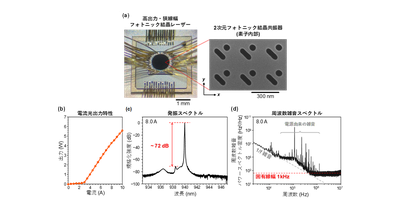2024-02-21 カーディフ大学
<関連情報>
- https://www.cardiff.ac.uk/news/view/2797556-black-hole-fashions-stellar-beads-on-a-string
- https://iopscience.iop.org/article/10.3847/1538-4357/ad1101
クールコア銀河団で観測された最も強力な活動銀河核アウトバーストと “数珠つなぎ “星形成の関連性 “Beads-on-a-string” Star Formation Tied to One of the Most Powerful Active Galactic Nucleus Outbursts Observed in a Cool-core Galaxy Cluster
Osase Omoruyi, Grant R. Tremblay, Francoise Combes, Timothy A. Davis, Michael D. Gladders, Alexey Vikhlinin, Paul Nulsen, Preeti Kharb, Stefi A. Baum, Christopher P. O’Dea +
The Astrophysical Journal Published: 2024 February 21
DOI:10.3847/1538-4357/ad1101

Abstract
With two central galaxies engaged in a major merger and a remarkable chain of 19 young stellar superclusters wound around them in projection, the galaxy cluster SDSS J1531+3414 (z = 0.335) offers an excellent laboratory to study the interplay between mergers, active galactic nucleus (AGN) feedback, and star formation. New Chandra X-ray imaging reveals rapidly cooling hot (T ∼ 106 K) intracluster gas, with two “wings” forming a concave density discontinuity near the edge of the cool core. LOFAR 144 MHz observations uncover diffuse radio emission strikingly aligned with the “wings,” suggesting that the “wings” are actually the opening to a giant X-ray supercavity. The steep radio emission is likely an ancient relic of one of the most energetic AGN outbursts observed, with 4pV > 1061 erg. To the north of the supercavity, GMOS detects warm (T ∼ 104 K) ionized gas that enshrouds the stellar superclusters but is redshifted up to +800 km s−1 with respect to the southern central galaxy. The Atacama Large Millimeter/submillimeter Array detects a similarly redshifted ∼1010M⊙ reservoir of cold (T ∼ 102 K) molecular gas, but it is offset from the young stars by ∼1–3 kpc. We propose that the multiphase gas originated from low-entropy gas entrained by the X-ray supercavity, attribute the offset between the young stars and the molecular gas to turbulent intracluster gas motions, and suggest that tidal interactions stimulated the “beads-on-a-string” star formation morphology.



